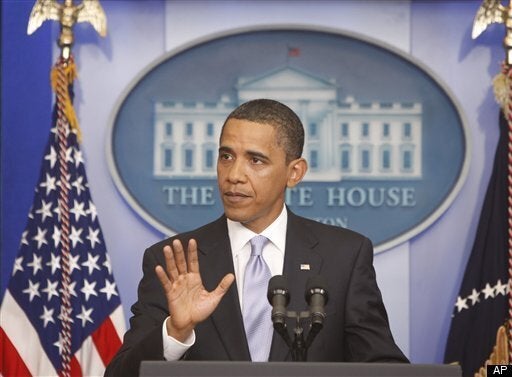
Despite grim new portraits of U.S. fortunes in Afghanistan, Washington's debate over troop levels continues unhinged from reality.
Gen. Stanley McChrystal argues that the fate of the war hinges on sending 60,000 more U.S. troops into the battle, which would push the total of soldiers and marines in Afghanistan beyond 130,000 sometime next year.
But according to the conventional math by counterinsurgency's most fervent advocates -- like McChrystal himself -- it's going to require a minimum of 600,000 troops to give the U.S. a fighting chance beat back the Taliban, not 60,000.
And those troops, plus legions of civilian advisors, are going to have to help the Afghans field an effective army and national police force, now both riddled by corruption, to higher numbers than that.
Such grim facts were obscured by the jarring television portraits of GIs struggling to combat the insurgency in a PBS Frontline documentary and on 60 Minutes this week.
But the numbers jump off the transcripts, especially Frontline's, where the unedited interviews continue well beyond what made the final cut for the TV shows.
There, even former army colonel John Nagl, one of counterinsurgency theory's leading lights, concedes that 10 times the 60,000 troops McChrystal says victory hinges on will be needed to win.
"By classic counterinsurgency measures, success in Afghanistan would require 600,000 counterinsurgents," says Nagl, author of "Learning to Eat Soup with a Knife: Counterinsurgency Lessons from Malaya and Vietnam," and a major contributor to the Army's Counterinsurgency Field Manual, published in 2006.
"We're well below half that right now. So the current international forces on the ground, after a huge increase in American forces in 2009, which is not yet complete -- we're at about 100,000 internationals. We've got about 80,000 Afghan army, we've got about 60,000 Afghan police, for a total of 250,000 counterinsurgents," Nagl says.
Nagl and other counterinsurgency enthusiasts say the path out of Afghanistan's darkness will be assured by the brilliant leadership of Gen. David Petraeus, now CENTCOM commander, who had stunning success against insurgents in the northern Iraqi city of Mosul shortly after the Iraq invasion, and McChrystal, author of the "Awakening" strategy that turned Iraq's sunnis against al Qaeda.
But others on the Frontline show argued neither of those successes hinged on the kind of counterinsurgency formula being championed in Afghanistan.
"I would argue ... that many techniques that helped reduce the violence in Iraq were in fact not featured in the manual, that it was not primarily a counterinsurgency operation," said Celeste Ward, political adviser to the operational commander of U.S. forces in Iraq in 2006 and deputy assistant secretary of defense for stability operations capabilities in 2007-08, in comments that were not broadcast on Frontline.
"In fact, our problems in Iraq were not strictly according to definition of an insurgency according to the military, but were multi-faceted and really crossed borders," added Ward, now a senior defense analyst at the RAND Corporation.
"It really wasn't this entity outside of the government that was challenging the government. They were ethno-sectarian and other conflicts that were actually featuring major government players. So it really wasn't an 'us' and 'them.' It was a honeycomb of interests and conflicts that were being played out in Iraq."
Nevertheless, "counterinsurgency" gained a luster it didn't deserve, Ward says. It became a virtual fad.
"The perception that they succeeded I think led to these ideas gaining huge credence in the defense community, and becoming so prominent that really discussion of alternatives got sidelined to an unhealthy degree in my opinion," Ward told Frontline.
"And so then counterinsurgency emerged. I think the effect -- and I'm not sure this was anyone's intent -- but the effect has been to push out other concepts of internal conflict, and to a general tendency to group internal conflicts under this rubric, and to set aside other ideas of ways of resolving those conflicts."
Such as targeting terrorists and the Taliban for elimination, instead of trying to "nation build" in Afghanistan, a dubious prospect even with 600,000 troops, much less 60,000.
McChrystal and his counterinsurgency acolytes are stuck with their ideas even if they secretly know they won't work, Ward suggested.
They can't back down.
"I believe there is an element of counterinsurgency theory that contains quite a bit of hubris," she said.